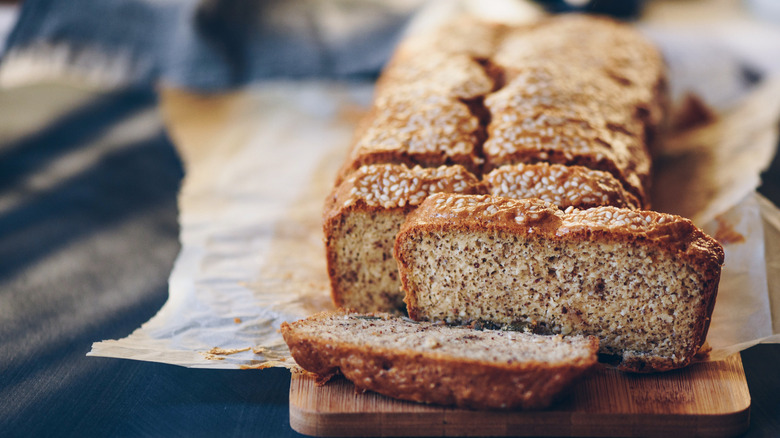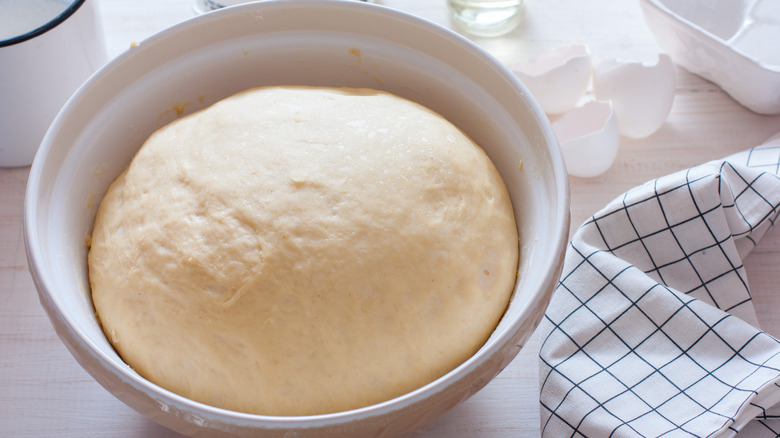No, You Don't Need A Fancy Proofer For Deliciously Baked Bread
We may receive a commission on purchases made from links.
Baking bread is as easy or hard as you want to make it. However, before you can bake bread, be it a plain white loaf or something more elaborate, the dough needs to be proofed. This is the technical term for the second of two rises, and it's meant to take place under very specific conditions. According to Nicole Bean, bread expert and co-owner and operator of two Houston-based, family-owned restaurants called Pizaro's Pizza Napoletana, "Ambient temperatures are usually best for proper proofing, usually between 70 and 80 degrees [Fahrenheit] with a high humidity." (She names 80% humidity as perfect for proofing.)
How are you supposed to achieve this combination of humidity and temperature? Well, one way would be to buy a proofing machine with time, temperature, and humidity controls like this 40L electric dough proofing machine. However, equipment like this is not completely necessary. Home cooks, after all, have been baking bread practically since the dawn of time without using such gadgets. Bean acknowledges this and says that, without a dedicated proofer, you should keep the dough in the warmest part of the kitchen and ensure that it stays moist by wrapping it with two towels (the inner one damp, the outer one dry). It can also be covered with plastic wrap or kept in a sealable container, but Bean says it should never be exposed to air as "excess oxygen [...] can dry out the dough."
How to create optimal proofing conditions
There are many reasons why homemade bread is good for you, but to reap these benefits you first have to make it. There's no denying that getting the dough right can be tricky. However, there are several other techniques you can use to ensure that your bread dough stays at the correct temperature and humidity without using a proofer. One technique involves putting the dough in a cold oven alongside a pan of hot (but not boiling) water. The hot water will boost the oven's temperature and humidity to near perfect levels. Don't turn on the oven, though, as too high of a temperature will cause the bread to overproof, and the resulting loaf, according to Nicole Bean, will have "too large of a crumb structure." You should also avoid opening the door for as long as it takes the dough to proof, and be sure to follow the recipe. As Bean points out, "Each bread type will be different and requires different techniques of proofing."
Yet another method for proofing dough involves the crockpot, but you don't use it in the usual way. Instead, pour in water to the halfway mark, set the temperature to low, then put the lid on the pot upside-down (assuming it's detachable). Drape a dishtowel over the lid, then balance the bowl of dough on top of this. This way, the indirect heat and moisture will help the dough stay warm and humid as it proofs. Failing all this, you can try proofing your bread dough in the oven, using the oven light. Although the bulb emits a bit of heat, it won't do much to boost humidity.

